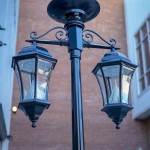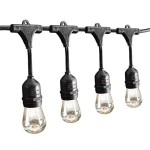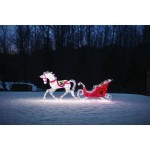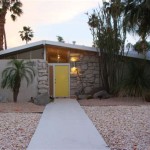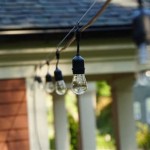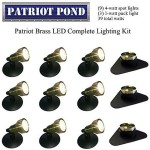Outdoor Architectural LED Lighting: Illuminating Structures and Spaces
Outdoor architectural LED lighting is an integral part of modern landscape design, enhancing the aesthetic appeal of buildings and outdoor spaces while providing functional illumination. LED technology offers numerous advantages over traditional lighting sources, making it a preferred choice for architects, designers, and property owners. This article explores the key aspects of outdoor architectural LED lighting, including its benefits, application, and considerations for effective implementation.
Benefits of Outdoor Architectural LED Lighting
Outdoor architectural LED lighting offers a range of benefits, making it a versatile and efficient solution for illuminating outdoor structures and landscapes. Its advantages include:
-
Energy Efficiency:
LED lights consume significantly less energy than traditional sources like incandescent or fluorescent bulbs. This translates to lower electricity bills and reduced environmental impact. -
Long Lifespan:
LEDs have a remarkably long lifespan, often lasting for over 50,000 hours, significantly reducing maintenance costs and the need for frequent replacements. -
Color Versatility:
LED lights offer a wide range of color temperatures and hues, providing designers with immense creative flexibility to highlight architectural details, create ambiance, and enhance the overall visual appeal of outdoor spaces. -
Dimming Capabilities:
Many LED lights have dimming capabilities, allowing for precise control over light intensity and creating different moods and atmospheres. -
Weather Resistance:
Outdoor architectural LED lights are designed to withstand harsh weather conditions, including rain, snow, and extreme temperatures, ensuring consistent performance and longevity.
Applications of Outdoor Architectural LED Lighting
Outdoor architectural LED lighting finds diverse applications in various settings, enhancing the visual appeal and functionality of structures and landscapes:
-
Building Facades:
LED lighting can be used to illuminate building facades, highlighting architectural details, creating dramatic effects, and adding visual interest to nighttime skylines. -
Landscaping:
LED lighting can be strategically placed to emphasize trees, plants, sculptures, and other landscape features, creating captivating nighttime scenes. -
Patios and Decks:
LED lighting can enhance the ambiance of patios and decks, creating inviting spaces for socializing and relaxation. -
Walkways and Pathways:
LED lighting provides safe and well-illuminated pathways for pedestrians, enhancing visibility and security. -
Water Features:
LED lighting can be used to illuminate ponds, fountains, and other water features, creating breathtaking visual displays. -
Public Spaces:
LED lighting can enhance the visibility and safety of public spaces, highlighting architectural features and creating vibrant and welcoming environments.
Considerations for Outdoor Architectural LED Lighting
Successful implementation of outdoor architectural LED lighting requires careful planning and consideration of various factors:
-
Light Distribution:
Consider how the light will be distributed to achieve the desired effect. Direct lighting can highlight specific features, while indirect lighting can create a more diffused and ambient atmosphere. -
Color Temperature:
Choose the appropriate color temperature to match the desired ambiance and purpose. Warm white light is often used for a cozy and inviting atmosphere, while cool white light can create a more contemporary and energetic feel. -
Control Systems:
Use control systems to adjust light levels, color temperatures, and scheduling, allowing for flexibility and energy savings. -
Installation:
Ensure the installation is professionally carried out to ensure proper wiring, placement, and weather protection. -
Maintenance:
Regular maintenance is essential to ensure the longevity and performance of LED lights. This includes cleaning the fixtures and checking for any malfunctions.
Outdoor architectural LED lighting offers a transformative approach to illuminate structures and spaces, enhancing their visual appeal, safety, and functionality. By carefully considering the benefits, applications, and factors influencing its implementation, architects, designers, and property owners can create stunning and sustainable outdoor environments.

Commercial Led Outdoor Lighting Made For Architects Alcon
Outdoor Led Lighting S Iguzzini

Landscape Architectural Led Lights Wattage Available 0 5w
Outdoor Lighting Ideas 10 Designs Architecture Design

Architectural Led Lighting Detail

Outdoor Led Soffit Lighting Astoria Co

Led Lighting Manufacturer Dauer Manufacturing

Outdoor Facade Lighting Rgb Super Slim Led Addressable Strip Linear Light For Architectural China Line Made In Com

Contemporary Style Linear Led Wall Lamp Metal 1 Light Outdoor Sconces Lam House Lighting Modern Exterior

Why Use Outdoor Led Wall Washer For Architectural Facade Rc Lighting
Related Posts
